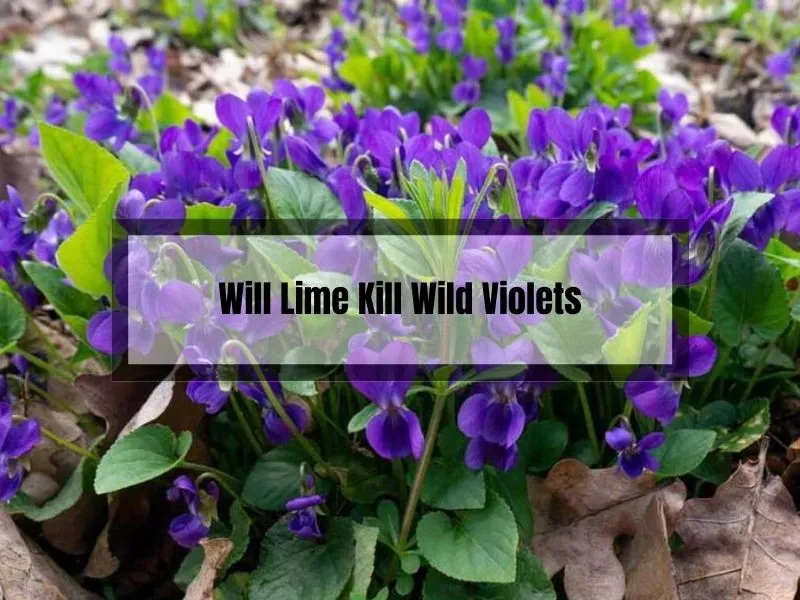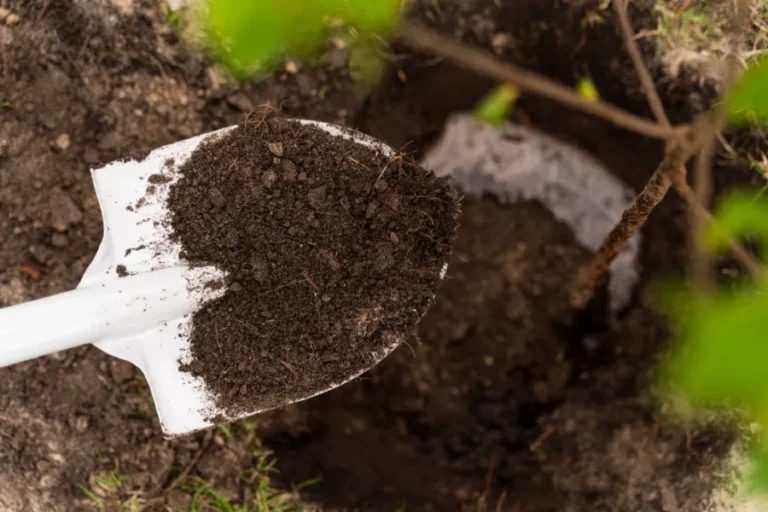Will Lime Kill Wild Violets? Exploring the Effectiveness of Lime on Wild Violet Control
Are you tired of wild violets taking over your lawn and garden? These pretty little plants may look harmless, but they can quickly become an invasive weed that detracts from the beauty of a lush green lawn. You may have heard that lime is an effective way to kill wild violets, but does it actually work?
When it comes to controlling wild violets, there are a variety of methods available, from chemical weed killers to organic options. Lime is often suggested as a natural way to kill wild violets, as it raises the pH level of the soil and makes it less hospitable for these plants to grow.
However, the effectiveness of lime on wild violets is a topic of much debate among gardeners and lawn care experts. So, will lime kill wild violets? Let’s explore this topic further.
Key Takeaways
- Lime may not be the most effective way to kill wild violets.
- Chemical weed killers and organic options are available to control wild violets.
- Prevention and maintenance tips can help keep wild violets from taking over your lawn and garden.

Will Lime Kill Wild Violets?
First, it’s important to understand what lime is and how it works. Lime is a soil amendment that is often used to raise the pH level of acidic soil. This can be beneficial for plants that prefer a more alkaline soil environment, but it can also have a negative impact on plants that prefer acidic soil, such as wild violets.
So, will lime kill wild violets? The answer is…maybe. Lime can help to reduce the acidity of the soil, which can make it more difficult for wild violets to thrive. However, it is not a guaranteed solution and may not be effective in all cases.
If you do decide to try using lime to get rid of wild violets, there are a few things to keep in mind. First, it’s important to test your soil pH before adding lime. If your soil is already alkaline, adding more lime could do more harm than good. You can purchase a soil pH test kit at your local garden center or online.
Second, it’s important to use the right type of lime. There are two main types of lime: dolomitic and calcitic. Dolomitic lime contains both calcium and magnesium, while calcitic lime contains only calcium. For most lawns, dolomitic lime is the best choice.
Finally, it’s important to follow the application instructions carefully. Too much lime can harm your lawn and other plants, so be sure to apply it according to the package directions.
How Lime Interacts with Wild Violets
You may have heard that lime can be an effective way to control wild violets in your lawn or garden. While lime can help to raise the pH level of your soil, which can make it less hospitable for wild violets, it is not a guaranteed solution.
Wild violets are notoriously difficult to control, and there is no one-size-fits-all solution. However, lime can be a useful tool when used in conjunction with other methods of control, such as hand-pulling or herbicides.
Here are some things to keep in mind when using lime to control wild violets:
- Lime works best in soil that is already slightly acidic, with a pH level between 5.5 and 6.5. If your soil is too alkaline, adding lime may not be effective.
- Lime should be applied in the fall or early spring, before new growth begins. This will give it time to work its way into the soil and adjust the pH level before the wild violets start to grow again.
- It’s important to apply the correct amount of lime. Too much can actually harm your lawn or garden, while too little may not be effective. A soil test can help you determine the right amount to use.
- Keep in mind that lime is not a quick fix. It can take several months to see results, and you may need to apply it multiple times over several seasons to achieve the desired effect.
While lime can be a useful tool in the fight against wild violets, it is not a guaranteed solution. It’s important to use it in conjunction with other methods of control, and to be patient and persistent in your efforts.
With time and effort, you can successfully control wild violets and enjoy a healthy, vibrant lawn or garden.
Alternative Methods to Control Wild Violets
If you’re not a fan of using chemicals to control wild violets, there are some alternative methods you can try. While these methods may not be as effective as herbicides, they can still help reduce the number of wild violets in your lawn.
Hand-Pulling
One way to remove wild violets is to pull them out by hand. This can be a time-consuming process, but it’s a good option if you only have a few wild violets in your lawn.
To make it easier, you can use a weeding tool or a small trowel to dig around the plant and loosen the soil. Then, gently pull the plant out by the roots.
Mowing
Mowing your lawn regularly can help keep wild violets under control. When you mow, be sure to set your mower blade to the highest setting.
This will help prevent the wild violets from flowering and producing seeds. However, keep in mind that mowing alone may not be enough to completely eliminate wild violets from your lawn.
Soil Amendments
Wild violets prefer acidic soil, so one way to discourage their growth is to make your soil less acidic. You can do this by adding lime to your lawn.
Lime raises the pH level of your soil, making it less acidic and less hospitable to wild violets. However, keep in mind that adding lime can take several months to have an effect, and it may not completely eliminate wild violets from your lawn.
Overseeding
Another way to reduce the number of wild violets in your lawn is to overseed with grass seed.
This will help fill in any bare spots in your lawn and make it more difficult for wild violets to grow. Be sure to choose a grass seed that is well-suited to your climate and soil type.
Prevention and Maintenance Tips
Now that you know that lime is not an effective method to kill wild violets, you may be wondering what you can do to prevent them from taking over your lawn in the first place. Here are some tips to help you keep your lawn healthy and free of wild violets:
- Mow your lawn regularly: Keeping your grass at the right height can help prevent wild violets from taking root. Make sure to mow your lawn regularly and keep the grass at a height of around 2-3 inches.
- Water your lawn properly: Wild violets thrive in moist soil, so it’s important to water your lawn properly. Make sure to water your lawn deeply and infrequently, rather than giving it a light watering every day.
- Fertilize your lawn: A healthy lawn is less likely to be invaded by weeds like wild violets. Make sure to fertilize your lawn regularly, using a high-quality fertilizer that is appropriate for your grass type.
- Use a pre-emergent herbicide: Pre-emergent herbicides can help prevent wild violets from taking root in your lawn. These products work by preventing weed seeds from germinating, so they are best applied in the spring before the weeds have a chance to grow.
- Remove wild violets by hand: If you spot a few wild violets in your lawn, it’s best to remove them by hand before they have a chance to spread. Make sure to remove the entire plant, including the roots, to prevent regrowth.
By following these tips, you can help prevent wild violets from taking over your lawn and keep your grass looking healthy and vibrant.
Frequently Asked Questions (FAQs)
How long does it take for lime to kill wild violets?
Lime doesn’t directly kill wild violets, but it can help create a less hospitable environment for them by raising soil pH. The effects of lime on soil pH can take several months to a year to become noticeable.
Can I use lime to control other weeds in my garden?
Lime can be effective in controlling some types of weeds that prefer acidic soil. However, it’s important to remember that not all weeds are sensitive to changes in soil pH, and lime may not be a universal solution.
Are wild violets harmful to other plants?
While wild violets can compete with other plants for nutrients, water, and sunlight, they are not directly harmful to other plants. However, their invasive nature can make it difficult for desirable plants to thrive.
What is the best time of year to apply lime to my lawn or garden?
The best time to apply lime is during the fall or early spring when the soil is moist but not saturated. This allows the lime to penetrate the soil more effectively and impact pH levels.
How can I tell if my soil is too acidic or alkaline?
To determine your soil’s pH, you can use a soil test kit or send a soil sample to a local extension office for testing. Based on the results, you can decide whether you need to add lime or other soil amendments to adjust the pH.
Conclusion
Lime can be a helpful tool in controlling wild violets by raising the soil pH and creating a less favorable environment for their growth. However, it’s not a guaranteed solution, as wild violets are quite adaptable and can still survive in less-than-ideal conditions.
Emphasis on Alternative Methods and Prevention
In addition to using lime, it’s essential to consider alternative methods for controlling wild violets, such as manual removal, chemical control, and natural control methods. By combining these techniques, you’ll have a better chance of managing wild violets effectively. Don’t forget that prevention is crucial – maintaining a healthy lawn and addressing the causes of wild violet infestations can go a long way in keeping these pesky plants at bay.
Encouragement for Maintaining a Healthy and Weed-free Garden
Your garden is your sanctuary, and it’s worth putting in the effort to keep it looking its best. By staying vigilant and using the right combination of control methods, you can tackle wild violets head-on and enjoy a healthy, weed-free garden. So, roll up your sleeves, get your hands dirty, and show those wild violets who’s boss! Happy gardening!
Related Posts:





